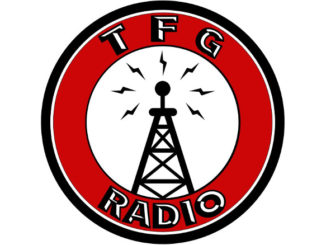Hey all, and welcome back to part 2 of discussing how to parse the sometimes (usually) vague rules of our beloved 40k.
You can check out the first part on RAW vs RAW to get yourself reacquainted with all of this.
RAW vs RAI
So, going back to the Broodkin question of “ally like Tyranids”, let’s assume that we are going to side on the RAW reading of definition 1 and assume “like” is being used as “in the exact same manner as Tyranids” and in that case, Broodkin cannot ally with anyone but themselves as BB.
But, reading the fluff of the Broodkin and even mentions of allying with Tyranids, we can argue that the rule writers intended for Broodkin to ally with Tyranids, and this seems logical. If the Broodkin exist to be a beacon for the hive fleets, well then it would appear obvious that the two forces work together harmoniously as the entire purpose of the Broodkin is to ensure that biomass is delivered to the hive fleet with as little resistance as possible. So from a RAI perspective, there is no reason to have Broodkin treat Tyranids as Come the Apocalypse (although GW has made it clear that they are actually Allies of Convenience, which again, from a RAI standpoint, makes sense although it is a kick in the teeth). While they may not want to go back to the genetic slurry of biomass, one can easily imagine a Genestealer cult erupting as the hive fleet invades to help subdue any defenders, so clearly, the two sides are working together in some way. We also see at the very end of the White Dwarf, there is a blurb that “Broodkin are happy to fight alongside Tyranids (and be eaten by them too!)“. This clearly communicates that the two forces are intended to be able to ally alongside each other in some way.
The problem with RAI is that “intended” is a nebulous idea. There is no hard and fast source to go to for “intended” as well, so we cannot actually know the intentions of the rules writers unless they express them to us. This comes down to anybody’s guess. You can certainly argue logically and based off of data, namely specific mentions within fluff that support a certain interpretation, but we also know that rules do not equal fluff. Essentially, we have to make inductive arguments based off of the fluff and other non-rules based writing.
So when do you go into RAI? For us, RAI becomes necessary when RAW is ambiguous or contradictory. If looking at the actual rules/words themselves and how these can be logically and soundly applied does not yield a clear answer, then RAI becomes a necessary tool. Of course, by definition, RAI is not absolute as “intended” means that there is a certain level of guesswork involved. We can never know intentions until they are directly expressed, and then it is not a matter of RAI but a matter of FAQ by the designers.
RAI can be helpful though, like for instance the case of the Tau Y’vahra battlesuit.
The rule Vectored Thrust Array states: At the beginning of any of the controlling player’s movement phase, a Y’vahra battlesuit may choose to move as though it was a swooping monstrous creature for that phase. As this move represents a long bounding leap rather than true flight, the Y’vahra battlesuit does not gain the vector strike special rule while moving in this fashion. This special movement may not be used in two consecutive turns.
So, the RAW states that the model only moves as though it was a FMC, and it specifically denies the ability to vector strike during a movement. My question is: If an enemy has a rule that allowed it to make an out-of-sequence shooting attack during the movement phase, does the Y’vahra have the ability to jink?
A RAW arguments gets muddy as it is clear that the ability lasts until the termination of the phase (essentially until the psychic phase), so the Y’vahra is still under the effects of the Vectored Thrust Array. Yet, it states “move as though it was a swooping monstrous creature”. The “move” is important here as it is not stating that it is treated as a swooping monstrous creature, simply that it moves like one. This would then state that the Y’vahra is not a swooping monstrous creature but rather a monstrous creature that is moving as though it were swooping. To me, this means it does not get the “jink” special rule as it is not in the “Swooping mode” to be able to benefit from the rule as it is never in the swooping mode but simply moving in the same manner as one (12-24 inches in a straight line with one 90 degree pivot at the beginning).
This is debatable as we’ve had some folk that argued yes, it could, and it gains jink for the entire turn. For me, I go to RAI here as the final nail in the coffin as they include this line: “As this move represents a long bounding leap rather than true flight“, this is meant to qualify that the battlesuit is not a swooping monstrous creature but just moving incredibly quickly in the air as part of a jump. From the fluff given and this phrase that the suit is just jumping, doing complicated acrobatics, dives,climbs, and barrel rolls is not exactly in its repertoire. The phrase is included to explain why the suit cannot vector strike, and I would argue that it would also include jink, despite not being specifically mentioned because the only rule that is pertinent to a swooping monstrous creature’s movement is vector strike. Jink would not be relevant until after the movement has completed as no out of sequence shooting interrupts a model’s movement. To me, the specific inclusion of limiting vector strike is to reinforce that the model is only moving in the same manner as a FMC, not that it becomes FMC for a phase.
Of course, this is all open to debate, and that’s part of 40K. English particularly is not a precise language; and conversational English is riddled with ambiguities. Seeing as the rules are not written with academic precision in mind, blackholes exist, and so when debating rules interpretations, we should always keep in mind that it is possible, even likely, that a legitimate counter-reading exists that cannot be dispelled, and thus a contradiction exists. When this happens, it is up to players to figure out a mechanism to solve these problems, whether it be an FAQ, a Dice-off (ugh, the Jervis), or simply allowing a third party to make the decision in that specific case (Judge).
Yes, this sucks sometimes, but well, here we are. It sucks when someone reads a rule differently than you, particularly when your reading provides you a distinct tactic, but we all have to remember that there is a certain slipperiness to this game, and so when someone has a different interpretation, it’s not personal, it’s just 40k.
As a community, we have to work together to solve these types of blackholes as best we can as otherwise, each game is a pit of vipers as especially in a competitive environment, disagreements will arise.
Should rules debates be solved by community vote? By a council of elders? By official FAQ only? Those are different questions for different articles.



